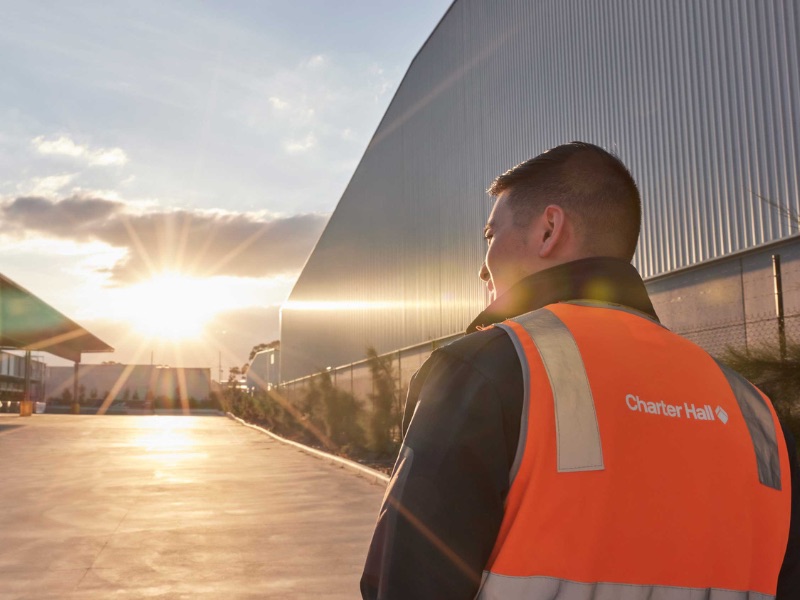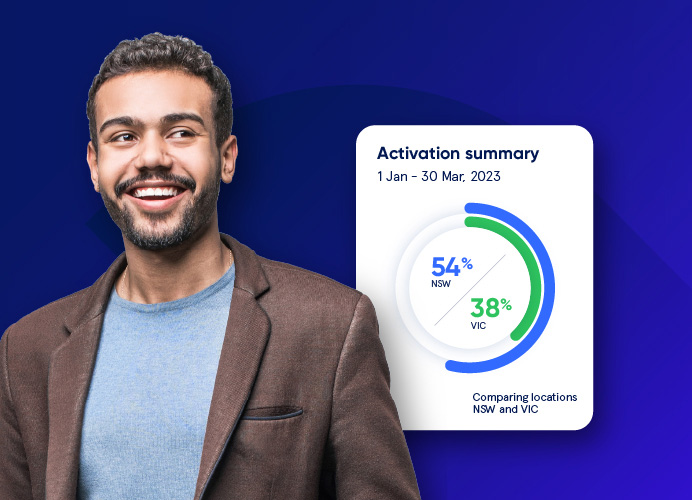Line managers are not mental health experts [Video]

Insights.
Dr Jamie Phillips, our medical director and head of member support, recently delivered a presentation for line managers at the Workplace Mental Health Symposium (WMHS).
His key insights for managers were:
1. You are not a mental health expert – and no one expects you to be;
2. Use evidence to shape your approach – focus on what matters;
3. Embrace chaos – this is where the real impact happens; and
4. Be human and be kind – be real, be genuine, and care.
Dr Jamie also discussed some research studies around mental health and COVID-19.
Here are some excerpts, together with the full presentation and transcript.
Excerpts
- “About seven per cent who showed that they were initially stable at the beginning of COVID, but as things went on and the impact started to stack up for them, they showed a consistent and persistent decline in their mental health.”
- “They found that younger people, the 19 year-old cohort, had the worst mental health outcomes during COVID. They were followed by the 30 year-old cohort. And then the 50 and the 62 year-old cohort had the least impact.”
- “[At Sonder,] we’re seeing 94 per cent (just under) of people want to get in touch with us by chat. They don’t want to use the phone.”
- “Nearly half of people come in with multiple problems. It is not the problem they initially present with that’s the underlying problem.”
Presentation
Transcript
Host:
Really looking forward to this session, “Line managers are not mental health experts”. Today we’ve got Dr Jamie Phillips joining us. Jamie’s bio is really impressive. I encourage you to go and have a look at his military and medical background. One thing Jamie is, by the way, medical degrees are hard to get at the best of times, but you didn’t just do yours in English, you did it in French at the same time, so that to me just blows my mind. Congratulations on a fantastic career to date and I’m really looking forward to the session. So, over to you.
Dr Jamie Phillips:
Beautiful. Thank you very much! Let me just share my screen. Just let me know when you can see that. We good?
Host:
Pretty good now. Thank you!
Dr Jamie Phillips:
Perfect, that’s great! Thanks Jim.
So guys, I’m mindful of time. I’ve got the death speaker’s position right before lunch, so I will do my best to keep it on time. If we don’t have time for questions afterwards, I’ll hang around or answer any particular questions.
So yeah, I was asked to talk about “line managers are not mental health experts” and I think it’s a really pertinent thing. I speak as both a doctor, as a line manager, and also as an executive. Because I keep hearing [that] we’ve got this mental health epidemic coming. And I think the statistics show certainly it’s on its way. But is it really an epidemic? I don’t know and hopefully, I’ll challenge some of your preconceptions about that.
I’m going to use the frame of COVID. Why? Because COVID in Australia has really brought this to the fore of managers’ minds. It’s brought before my mind as a clinician but also as a manager. Has it made it worse? Possibly. Has it made us focus on it more? Definitely. So I’m going to hopefully give you four key insights over the next 10-15 minutes.
I mean the point one is you’re not mental health experts and nobody wants you to be. We want you to be humans. I want you to use evidence to shape your approach. Focus on what matters rather than what’s new or what’s fashionable. I want you to embrace chaos. It’s the thing that all of us as managers find uncomfortable. But actually, if you embrace chaos, that’s where the real impact happens for your people and for your business. And the final thing is, be human and be kind.
Real people in your businesses want real people to help them. And this is something that we never tell you as clinicians. Uncertainty is central to what we do. Our egos don’t let us make you think we are these, don’t let us let you know that we don’t always know what’s going on. The best clinicians and the best patients embrace this uncertainty. They run on that journey together and they cope with it because that’s where wisdom comes from.
And I learned this in my emergency department. Deployed in Afghanistan, Iraq, and around the world. But it wasn’t really until I started going on the ground and started fighting battles that I really started to understand the challenge of uncertainty and chaos. Not as a clinician but as a leader. Because people are complex, they’re not complicated. I would love it as a leader and I would love it as a clinician, if I could apply a recipe to fix somebody. They just don’t work like that!
I heard a lovely description which is, managing people is not like a recipe, it’s not like baking a loaf of bread, and to be honest it’s not like trying to get a rocket to the moon. Whereas if you do it once, you can probably do it successfully a second time. It’s like raising a child, and as a father of four kids, I know it’s hard. I know it’s messy. I know it’s frustrating. But I know it’s ultimately rewarding. And I think that’s the way we should all look at managing our people, and particularly managing our people when we’re trying to help them with their mental health problems.
And to do that, I use a model called the OODA loop. You may have heard it in military circles. And it’s a really simple way to make sense of chaos. It’s a really simple way to, when you’re faced with the situation you don’t want to do, you apply it. Observe. Just look at what’s going on. Think. Orient. Get some data points. Decide. You’ve just got to make a decision. Sitting on the fence is not going to help you and it’s not going to help the person. It’s not going to help your business. And then make a decision but be willing to feed back into that feedback loop. Get the data points again and start the cycle again. So we use the OODA loop as a quick way for us to orientate the way we’re thinking about this and maybe answer some questions as well.
So this is our world 12 months ago, wasn’t it? Terrified about COVID. No one really knew what was happening. Luckily, here in Australia we were all quite protected. But we could see it coming over the horizon, around the world. And then somewhat inevitably, it came to our shores. And we currently see New South Wales and Victoria struggling with this second bump of COVID.
But there’s a third bomb coming and we can already see this coming from the UK, we can see it coming from the US, and see it coming from India. It’s what people are calling the second pandemic. And it’s the mental health problems that seem to be associated with societies, communities and individuals, and families dealing with COVID.
So we talked about the situation we’re in. Let’s orientate ourselves. Let’s use some data points to see what’s going on. Let’s not listen to media. Let’s look at evidence. And what I’ve done is I’ve looked over the water, looked to the UK who is slightly further ahead of us on this journey and I found three fantastic studies that were for me, as a manager, made my life much easier and maybe help understand what’s going on.
This first paper, lovely longitudinal study, looking at nearly 20,000 adults. People over 16 in the UK. Broadly representative of our Australian population. And actually what they found was that the majority of people during COVID showed no or minimal mental health impact. But one in nine did, and one in nine people had deteriorating or consistently poor mental health during the initial phases of COVID and during the lockdown.
But I dug deeper. What I found was that yeah, actually do you know what well over 37 per cent reportedly had very good mental health during COVID, another 39 per cent had good mental health as well, about 12 per cent had an initial dip at the beginning of COVID but then it recovered back up to their baseline.
But it was these latter two groups, group four and group five that should be of most interest to us. It was five per cent of the population showed an initial worsening and then persistently low mental health. There was a more concerning break about seven per cent who showed that they were initially stable at the beginning of COVID, but as things went on and the impact started to stack up for them, they showed a consistent and persistent decline in their mental health.
And what they talk about in this paper is there seem to be three factors that are associated with that: people with pre-existing mental and physical health problems; people who live in socially deprived areas; and people who are from a recognised minority in the UK.
Building on from that was a lovely longitudinal study from London from UCL, and what they did is, they looked at the question slightly differently. They had a huge data set on four and realistically five different data sets of groups of people by age. They’ve been following them before COVID. They just applied COVID modelling to see what happened to them and what they found out was very, very remarkable.
They found that younger people, the 19 year-old cohort, had the worst mental health outcomes during COVID. They were followed by the 30 year-old cohort. And then the 50 and the 62 year- old cohort had the least impact.
They found that females reported poorer mental health during the pandemic and particularly during lockdown, although that was broadly similar in terms of distribution to what we see in the rest of the population. They found that there were a higher proportion of 30 year-olds not 19 year-olds who reported marked psychological distress. And again, that was more common in females. And they noticed a higher level of psychological distress in people without a degree, although again that modelling was very, very similar. So we start to build up a bit more of a picture about people who may be affected by COVID.
And then finally, this recent article has just been released and they’ve dug really deep into the data. They’ve looked at a community cross-section, so they’ve taken a community of people, a very large data set, and cut it straight down the middle. And when you look at the modelling, it’s broadly comparable to the Australian population.
And what they found with depression, it was more associated with being female, being younger, living alone, and being in an atmosphere with COVID-19 anxiety. Same groups, apart from living alone, and stress, were associated with being younger, female, from an ethnic minority, living alone, and being at risk of COVID-19. So we’re really starting to see a pattern now that people who are negatively impacted by COVID-they tend to be younger, they tend to be female, and there will often be an at risk group from COVID-19.
The frustration for us as managers is those factors aren’t really modified. We can note them. We can look out for them, but what can we do about it? We can’t really change those. Luckily, what they did in this study is they looked at modifiable factors as well. And the number one thing that seemed [to exist was] the perception of loneliness, which is very important for us as managers, because working from home is going to be the new normal.
Social isolation is going to be more than it used to be. So as managers, we should do, and we must do, something from a risk management point of view, but from a moral point of view, to reduce perceived loneliness.
Second marker was low positive mood. And low positive mood is not just the absence of negative thoughts. It’s a mindset. And it’s something that can be coached. It’s something that can be engendered – as an organisation, within teams, and by individuals as well.
We know that positive mood has a beneficial effect on wellbeing and it’s protective in people who have challenging situations. It also reduces the risk of mood disorders, anxiety, and can influence recovery from mental health. And the key thing is it’s modifiable.
And then the final one was really interesting for me. It was people who were concerned about the risk of contracting COVID-19. And actually, it was more marked in younger people, the people who were less likely to get COVID-19, and the people who are less likely to be impacted by the physical problems associated with COVID.
So, we observed and orientated. Now, we’ve got to decide. We’ve got to make a decision. And this is a slide that shows a data set for one of our members. One of our companies that we work with at Sonder and we were working with them.
They said, “Jamie, do you think we’ve got a problem?”. So we looked at the data. The answer was, yes, we have a problem.
We compared data from August 2020 to August 2021. We can see there’s been a massive increase in people seeking support from us in the areas of wellbeing, mental health, and medical, and really safety has increased proportionately.
So we’re able to say to them, “yep you’ve definitely got a problem. What do you want to do about it?”. And instantly, they went to the, well, what I call, within the circle of concern. They went to the circle of concern. The things that are bothering the most, which was, “Should, how long is COVID going on?”
I said, well, look, we can’t influence that. That’s not something we can influence. How long it goes on and certainly, I use the phrase, the phrase “COVID, as usual”. This is going nowhere and it’s going nowhere fast.
So, we could spend hours worrying about what’s going to happen. But we’re not going to change that, so let’s focus on the circle of influence, which are things that we can indirectly influence, and then really, really focus on a circle of control.
What can I do, what can they do as a manager and as a leader, and as a business. And that drives us perfectly into acting. You’ve listened to the situation. You’ve listened to your people. You’ve gathered the data. You’ve made a decision. This is important for us. What are we going to do?
Well, there’s several simple steps. The first thing is get yourself a navigator. Get somebody who understands your people. Get somebody who understands the situation and get them to stand alongside you as you lead on this journey.
Occasionally, just like we do, when I was in the navy, we would bring a navigator on board. We bring a pilot onboard a warship. And the captain, despite being responsible for his or her crew, would hand the wheel over to that pilot to get them through difficult waters that they didn’t understand.
They still retain responsibility for the ship and they still respond to retain responsibility for everybody within that ship, but they trusted somebody else to get them through the waters they didn’t understand.
This is what I invite, advise, leaders to do if you’re in an area that’s out of your control or an area that’s out of your influence. Get yourself a navigator. Get them to stand alongside you but don’t let them be prescriptive. Let them work with you, because you know your people.
The second thing is, as a leader, is make yourself accessible. We see too often people delegating the responsibility for mental health and wellbeing to other people. I don’t encourage that. I encourage them to say, “you’re important to me, I’m bringing this navigator on to help me guide you, but I’m still going [to be] here, I’m still looking for you, I’m still taking care of you”.
And by doing that, you just embrace the chaos and the uncertainty of their life. You’re willing to get down into – we use a metaphor called the “swamp of uncertainty”. You’re willing to get down into the swamp of uncertainty to save your people’s lives, and you’re comfortable there. And simply by doing that, it’s hugely psychologically protective for your people, but also for you as leaders.
We ask you to lower the bar for help, proactively look at things that are within your control and your influence, that flatten the power gradient between caregiver and care receiver.
Think about how people used to traditionally access care and think about how they want to access care. Certainly, we’re seeing 94 per cent (just under) of people want to get in touch with us by chat. They don’t want to use the phone.
Nearly half of people come in with multiple problems. It is not the problem they initially present with that’s the underlying problem. So, it’s about making it accessible, about making it accessible 24 hours a day, and making the care and support culturally appropriate whether that’s by language, by other markers, for example LGBTQIA+, or by immigrant status.
As soon as you lower that bar for help, people will come and ask for help. Don’t get distracted by factors. Don’t be worried about things that are [outside of your] circles of concern. You cannot change them. Put them down on a list and put them to one side. Focus on the circles of influence and the circles of control. And get comfortable with the fact that you are not a mental health expert. Your people know that and they don’t care. They don’t want you to be a psychologist. They don’t want you to be a counselor. They just want you to be human. Take time, be present, connect and listen to them. And to be honest, what they want is they want you to be an expert in them and be an expert in their leaders.
Because this is what it’s about. I love this quote. I’ve used it throughout my medical practice and broadly what it says is, “look, life is messy, there’s a swamp down in the low grounds which is hard-going. It’s difficult to see where you’re going. You can imagine the mangroves up in your face. You can’t see where you’re going and it’s hard work, but there’s some easy high ground up here and the high ground, the problems are straightforward, and you can use that recipe approach to fix them.”
But the bottom line is the stuff on the high ground doesn’t really matter. It doesn’t matter to people, it doesn’t matter to teams or businesses, and it doesn’t matter to the community. And what I encourage people to do as a leader is say, “Hey! I’m going to get down in the swamp and help you fix these problems. And while I’m down here, I may not know what’s going on and you may not know what’s going on, but together, we can figure it out. And there’ll be times when you’re tired and there’s times when I’m tired, but together, we can go through and seek out these islands of certainty.
And hey do you know what, if we don’t know where we’re going when we get a coxswain, we’re going to get a navigator come in, and they’re going to show us where to go because this is the bottom line: you need to take time to understand that everybody’s life is just as vivid as your own and when you humble yourself to do that, you flatten that power gradient, you encourage somebody to come and give you their honest opinion of what’s going on in their life or other people’s lives, and then together you can go on that journey through this one.
I’ll leave it there. Mindful of time, I’ve only got three or four minutes for questions, Jim.
Host:
Thanks, Jamie. I found that really interesting and some fantastic research to back up what you’re saying. The whole concept about embracing chaos, I think if you said that to us prior to combat, people wouldn’t think it’s as relevant as what it is today. We’ve all been through a hell of a lot of chaos in the last 18 months or so and we’re not over it. It’s going to come for some time, I’m sure.
It is a real challenge for leaders, but I think leaders show their leadership qualities during chaotic times and tough times. Through organisational change or through society change that we’re going through right now. Any insights on how leaders embrace change, I suppose?
Dr Jamie Phillips:
I think I can talk about the greatest leaders I had, and then maybe leaders I haven’t had. So, certainly, I don’t know if you noticed there was a picture of a warship ran up against London bridge?
Host:
Yes!
Dr Jamie Phillips:
So, that’s from one of my finest leaders I’ve ever worked with. Now he was the commander of that vessel and he had two decisions. He could use a pair of tubs to get him up against the mooring, in there, and he didn’t really know the water. It’s the first time he’d ever been in that water but he thought, “No this is on me, my ship’s company are looking to me to know the yards here and I have to do it and I can’t possibly fail.”
And he stacked the warship up against London bridge in a very public matter, and he chose not to trust the pilot to come on board and give him a hand and he also made a decision not to ask his crew and the people around him what he should be doing and he took that as a seminal leadership. He owned his mistake. He was very candid in his response and really embodied a growth mindset and actually said “hey, do you know what, I’ve got it wrong? I got this wrong. This is why I got it wrong and these were the problems and I’m going to look to the rest of my team to tell me how to get better”.
And he went on to be one of the most humble and most remarkable leaders I’ve ever had. Because he had that humility and he started from a position of a very flat power gradient, which in the military, where we all used to wear our rank on our sleeve, is a very powerful thing to do.
Host:
I think that makes sense. And it almost answers the next question that came through, which is about, “how do we choose [the] right navigators through these tough times of COVID and mental health? The challenges, but I think as your example points out, a leader will engage in expertise and seek support in the areas that they need support engagement. They’re not strong in every area.
Dr Jamie Phillips:
No. I think they’re not, Jim. There are three characteristics to a good system – good healthcare system.
Quality – it needs to be underpinned by evidence-based, safe, quality care, with a growth mindset behind it that they’re transparent with their mistakes [and they] want to get better.
The second thing is accessibility. So the old days of nine to five, Monday through Friday, nothing on the weekends, using a phone, they’re just, they’re gone. Yeah and COVID has accelerated that. Look how much people have embraced telemedicine, embraced this. This is the new normal. If I can do an order of my shopping at 11 o’clock at night and get it delivered, why can’t I access quality healthcare at that time? I don’t understand it.
And the final thing is value. And it’s not value on the dollar value, it’s perception of value. And it’s about whether people have, because actually I also say to my team, the new currency of healthcare is communication and compassion. Because you can look anything up on Google, but you can’t get compassion on Google. So if I was going looking for a new team, that’s what I look for – quality, accessibility, and value for money – and value for money is not on dollar, it’s on human connection.
Host:
Great, thanks Jamie. And I think as we wrap up, I think it is about, leaders don’t need to be experts in mental health. They need to have good navigators to guide them along the way. They need to be kind and be human. I think that’s fundamental to being a good leader. And they need to embrace chaos. They need to accept that that’s part of running a business and being a leader in this day and age.
Thanks Jamie! I really appreciate your input.
Dr Jamie Phillips:
Thanks Jim.
Want to learn more?
More highlights from the Workplace Mental Health Symposium.
More information about Sonder.
About Sonder
Sonder is an Active Care technology company that helps organisations improve the wellbeing of their people so they perform at their best. Our mobile app provides immediate, 24/7 support from a team of safety, medical, and mental health professionals - plus onsite help for time-sensitive scenarios. Accredited by the Australian Council on Healthcare Standards (ACHS), our platform gives leaders the insights they need to act on tomorrow's wellbeing challenges today.
Related posts
There's so much more to share
Sonder is reimagining health, safety and wellbeing support. Sonder proves human centric care leads to earlier intervention. Sonder impacts one person at a time to drive meaningful change across an organisation. Sonder understands people and how to support them.






